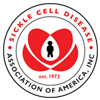Trusted Resources: Evidence & Education
Scientific literature and patient education texts
Haematological determinants of cardiac involvement in adults with sickle cell disease
source: European Heart Journal
year: 2016
authors: Damy T, Bodez D, Habibi A, Guellich A, Rappeneau S, Inamo J, Guendouz S, Gellen-Dautremer J, Pissard S, Loric S, Wagner-Ballon O, Godeau B, Adnot S, Dubois-Randé JL, Hittinger L, Galactéros F, Bartolucci P
summary/abstract:AIMS:
Cardiac involvement is common in sickle cell disease (SCD). Studies are needed to establish haematological determinants of this involvement and prognostic markers. The aim of the study was to identify haematological factors associated with cardiac involvement in SCD and their impact on prognosis.
METHODS AND RESULTS:
This longitudinal observational study was performed on 1780 SCD patients with SS or S-β(0)-thalassemia referred to our centre. Six hundred fifty-six met our inclusion criteria (availability of a blood-workup and echocardiogram obtained <1 year apart, no heart valve surgery and no current pregnancy). Median age was 31 (interquartile range, 25-40) years, and median haemoglobin (Hb) was 87 (80-95)g/L. Left ventricular (LV) dilation, left atrial dilation, cardiac index (CI) >4 L/min/m(2), LV ejection fraction <55%, and tricuspid regurgitant velocity (TRV) ≥2.5 m/s were found in 35, 78, 23, 8.5, and 17% of patients, respectively. Compared with other patients, those in the fourth quartiles (Q4) of LV end-diastolic dimension index (LVEDDind) and left atrial dimension index (LADind) and those with high CI had significantly lower Hb, % foetal Hb (HbF), and red blood cell (RBC) counts; and significantly higher lactate dehydrogenase, bilirubin, and %dense RBCs. Independent haematologic determinants of Q4 LVEDDind and LADind were low RBC count and %HbF; high %dense RBCs were associated with LADind. Low %HbF and RBC count were associated with high CI. High %dense RBCs or no α-thalassemia gene deletion was associated with greater severity of anaemia and cardiac dilation and with higher CI. During the median follow-up of 48 (32-59) months, 50 (7.6%) patients died. Tricuspid regurgitant velocity ≥ 2.5 m/s was a predictor of mortality. The risk of death increased four-fold when left ventricular ejection fraction <55% was present also (P = 0.0001).
CONCLUSION:
Cardiac dilation and CI elevation in patients with SCD are associated with haematologic variables reflecting haemolysis, RBC rigidity, and blood viscosity. Tricuspid regurgitant velocity ≥ 2.5 and LV dysfunction (even mild) predict mortality.
DOI: 10.1093/eurheartj/ehv555
read more full text
Related Content
-
SCDAA News Advisory: Partial Hold on Gene Therapy TrialOn December 20, the FDA placed a partial...
-
The Association Between Timely Opioid Administration and Hospitalization in Children With Sickle Cell Disease Presen...Objective: To evaluate the association ...
-
Virtual Reality Helps Reduce Pain Among Patients With Sickle Cell DiseaseImmersive virtual reality appeared effec...
-
Sensorineural Hearing Loss in Children With Sickle Cell DiseaseIntroduction: Sensorineural hearing los...
-
Sickle Cell Center of Southern LouisianaThe Tulane University Sickle Cell Center...
-
Wanda Whitten-Shurney, MDDr. Wanda Whitten-Shurney is a pediatric...
-
Deepika Darbari, MDDr. Darbari is a pediatric hematologist ...
To improve your experience on this site, we use cookies. This includes cookies essential for the basic functioning of our website, cookies for analytics purposes, and cookies enabling us to personalize site content. By clicking on 'Accept' or any content on this site, you agree that cookies can be placed. You may adjust your browser's cookie settings to suit your preferences. More Information
The cookie settings on this website are set to "allow cookies" to give you the best browsing experience possible. If you continue to use this website without changing your cookie settings or you click "Accept" below then you are consenting to this.




 +myBinder
+myBinder
